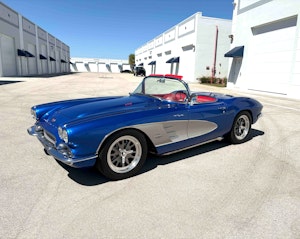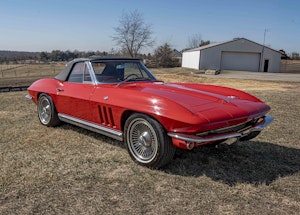Media | Articles
The seductive trap of the Lotus Europa, Part 1
Two weeks ago, I told you the story of my 1982 Porsche 911SC, the car I never should’ve sold. Here’s the story of the car I never should’ve bought.
20171024130359)
When I was a kid living in Amherst, Massachusetts, in the early 1970s, I worked in a stereo store. The owner went through sports cars like Kleenex. One day he drove up in an impossibly low, impossibly angular, impossibly red Lotus Europa. I was transfixed. That thing was sexy.
Fast-forward to 2013. My first book, Memoirs of a Hack Mechanic, had just been published. In the book, I talk quite a bit about the important role that cars play in life, and tell the full story about my old boss’s Europa. There’s not big money in niche motor books, but still, its publication was a milestone that I wanted commemorate. I was still smarting from selling the Porsche, and I wanted to buy myself a present. And not another vintage BMW. Something outside the box.
So it seemed natural for me to close the circle that began as a teenager in Amherst and begin looking at Lotus Europas. They’re weird cars; you either love ’em or hate ’em. A fiberglass body sits on a steel backbone. It employs a mid-engine configuration that uses no rear subframe (more on this later). The wicked-low 42-inch roof line makes the car look lean and mean, but the high, flat engine compartment hatch in the back is a quirk many consider jarring. (As a result, it’s sometimes referred to derisively as a “bread van.”) Because of the controversial styling, Europas haven’t appreciated in value the way front-engine two-seater Elan roadsters have. You can find running Europas for 5-to-10 grand, and fairly nice, well-sorted ones for 15.
Marketplace
Buy and sell classics with confidence
The early S1 and S2 Renault-powered Europas look different from the later Twin Cam cars. The S1 and S2 have high rear quarter panels (referred to as “sail panels”) that continue the roof line back to the tail. They almost look like blinders. And they almost were—they obscured the side-to-side view out the rear windshield.
20171024130158)
In contrast, the later Twin Cam cars have cut-down sail panels whose height quickly drops to that of the engine hatch. However, since the rear windshield is literally only four inches high, the idea that the visibility through it is substantially improved by the cut-down sail panels is somewhat fanciful.
20171024130254)
I saw a running Twin Cam car with pretty burgundy paint, whose sale price stalled on eBay at about $8,500. It was in New Jersey, within easy towing distance. Then, unfortunately, the car was linked to on Bring a Trailer and it got the “BaT bump.” It closed at around 12 grand. Oh, well, I thought, at least it’s a data point.
Then, during a search on Craigslist, a very original brown 1974 Twin Cam Special with 20,000 miles on it showed up in Chicago. The seller bought it from the original owner’s son, and reportedly it ran when parked (ha!), but the engine had seized from sitting. The car was on display in the foyer of the owner’s European car repair shop, and he wanted to sell it to finance a Porsche-related project. I asked a friend who lives in Chicago and happens to own an Elan to look at the Europa and negotiate on my behalf. He called me back later that afternoon. “Congratulations,” he said, “You paid $5,800. You own a little brown thing.” I had never done anything remotely like this before, but I was ecstatic.
20171024130544)
20171024130512)
I immediately began the kind of optimistic planning natural to someone who has no idea what they’re doing. I started looking for another motor. You have to understand that, coming from the vintage BMW world, if you need a motor for a 1970s BMW 2002, you can find them all day long for short money. For instance, $300 buys you something that turns but has no provenance or guarantee in terms of compression or oil burning, and for $800 you can look the seller in the eye and be relatively convinced that the motor was “a runner, not a burner” when he pulled it from a car he was parting out. Rebuilding yours will run $4,000–$5,000 if you replace all the parts except the crankshaft and rods and re-bore the block. Those are the parameters of the bell curve.
In contrast, when I searched on eBay for “Lotus Ford Twin Cam Engine,” and found a never-run rebuilt one for $8,500, I nearly spat out my coffee.
I dug a bit deeper into learning about the engine, as I should’ve done before I bought the car. It turns out that about 55,000 Lotus-Ford Twin Cam engines (or “twinks” as they’re sometimes called) were produced. The bottom end is a Ford 1.6-liter block, but the head and most of the internals are from Lotus and are specific to the twink. They were in Lotus Elans, Cortinas, Europas, Sevens, and Ford Escort Twin Cams. That’s it. While 55,000 is a lot more than the thousand engines that might be in some homologation car, it sure as hell ain’t 2.3 million. I learned that if a never-run rebuild has provenance, the one I saw on eBay for $8,500 actually isn’t so outrageous after all.
But first, I needed to get the car home. It’s always risky shipping a dead car. I had the seller verify that the wheels weren’t frozen and that the handbrake worked, but still, the idea of shipping this fragile fiberglass-bodied car via anything other than point-to-point enclosed shipping seemed like false economy. Intercity Lines quoted $1,200, which seemed quite reasonable. A week later, the big truck arrived. I live on a small street, so any auto transport using a full-sized rig needs to pick up or drop off on the larger thoroughfare around the corner. It’s easy enough to bang three left turns in a running car, but unfortunately the Lotus, which hadn’t run since 1979, was deader than Millard Fillmore.
I hastily corralled my wife, one of my kids, and a neighbor, and we pushed the car onto my street and eventually down my driveway (although considering the Europa weighs 1,600 pounds, I probably could’ve pushed it myself).
My driveway slants slightly down into my garage, so I had a moment of anxiety when I pushed on the brake pedal and found it completely frozen. Thankfully, the handbrake worked as advertised and easily slowed the car. My garage is shaped like a shoebox. It holds up to four cars aligned in two rows. I rolled the Lotus into the least-accessible spot in the left rear.
That was four years ago. The car hasn’t moved since.
Initially there was quite a flurry of activity. The first thing I needed to know was if the engine could be unstuck, as rebuilding it might be the least expensive path to a running car, if it could be rebuilt. So, during a feverish three days, my first repair on the car involved pulling the drivetrain and tearing down the engine. I suppose it was appropriate baptism by fire, sort of a torrid clothes-tearing first date for a car like that.
20171024130033)
The first thing I learned was that Lotus founder Colin Chapman’s oft-quoted “simplify, then add lightness” mantra is more than just empty words. It’s a design philosophy that permeates the Europa’s being. I knew that the Europa was mid-engine. I knew that, for weight-saving reasons, it had no rear subframe, and used a U-shaped carrier to support the engine instead. I knew that the engine is genuinely forward of the rear wheels, the water pump is at the small of your back, and the Renault transaxle faces rearward. But when I began to remove the drivetrain, I learned something astonishing: Since there is no rear subframe, the rear trailing arms are attached to the transaxle. In race-car design parlance, the transaxle is a “stressed member.”
20171024125912)
From a practical standpoint, what that means is that once the drivetrain is removed from the car, there is nothing affixing the camber of the rear wheels. They flop in the breeze. The car becomes a beached whale. It must be supported on jack stands.
Now, think about that for a moment. The car was driven into a garage in 1979 and rolled in and out of various structures (and a trailer) before it got to me, and I rendered it immobile. People yank drivetrains, get in over their head, and bail out of car projects all the time. Those cars are advertised as “rollers,” and I’d chosen one of the few road cars on the planet that, with the drivetrain out, cannot be rolled. Anywhere. And it was going to sit where it was, through flood and famine, until there was a drivetrain back in it.
I like to think that I’m a guy who knows his limits. I don’t “restore” cars; I don’t have the patience or the financial resources. And I’ve never bailed out of a project (well, there was the hovercraft, but that’s another story). I had no idea the risk I had taken by buying a Europa and yanking its drivetrain. But I quickly found out.
That stressed member? Turns out it was me.
Next week: Onward through the fog.
***
Rob Siegel has been writing the column The Hack Mechanic™ for BMW CCA Roundel Magazine for 30 years. His new book, Ran When Parked: How I Road-Tripped a Decade-Dead BMW 2002tii a Thousand Miles Back Home, and How You Can, Too, is available here on Amazon. In addition, he is the author of Memoirs of a Hack Mechanic and The Hack Mechanic™ Guide to European Automotive Electrical Systems. Both are available from Bentley Publishers and Amazon. Or you can order personally inscribed copies through Rob’s website: www.robsiegel.com.









